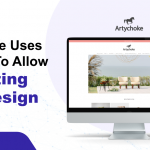How to Build an Ecommerce Website using Shopify?
- Anurag Pandey
- Last updated on December 11, 2023
- eCommerce, Shopify
- 10 minutes read
Table of Contents
- Introduction
- What are the advantages of using Shopify as your e-commerce builder
- How to build an e-commerce website using Shopify?
- Creating your online store
- Create product categories and brand your store
- Get the most out of Shopify’s integrations
- Build an ecommerce website based on a page builder
- Create your online store using the shopify theme
- Set up an online store using Shopify mobile app for iOS, android
- Integrate Shopify with third-party applications
- Get a domain name for your online store
- Finally, launch your online store
- Integrated Payment Gateway Platform
- Shopify is growing in recent years
- Conclusion
Shopify platforms are used to be the best eCommerce builder. Shopify platforms offer easy and simple design tools, easy-to-use eCommerce features, and an array of integrations with other services. Below is a list of the top 3 reasons that make Shopify the best eCommerce builder for your business:
1) Design-Shopify’s design tool allows you to create incredible store designs in a matter of minutes
2) eCommerce-Makes it easier for people to shop from you by offering simple checkout processes, powerful shipping options, and integrated payment gateways.
3) Integrations-Shopify offers a wide variety of integrations integrated to help grow your business.
Shopify is considered the best eCommerce builder because of its easy-to-use store builder, easy-to-add products, and excellent customer service. Using an eCommerce website using Shopify will help you to understand the scope of work better and in the right way.
Shopify has allowed entrepreneurs to create an online store from scratch in less than 3 minutes. Shopify offers free templates that are customizable with an eCommerce website using Shopify, or if you want to start from scratch there are dozens of pre-built themes for your online store for you to choose from. Adding new products is effortless and you will receive automatic notification when shipping rates change or when your product sells. Their integration with other services allows you to build a highly functional and personalized website with ease.
What are the advantages of using Shopify as your e-commerce builder?
1. It’s easy to create a store on Shopify
Shopify has been described as the best eCommerce builder because it allows you to build a great-looking eCommerce website quickly and easily. The design of your site can be either based on a pre-designed theme or a customized one that you’ve created yourself. With the Shopify platform, you can run your online business under the following settings:
– You have complete control over your online store through an eCommerce website using Shopify. You can set up shipping rates and taxes depending on zip codes and enter invoices, sales orders, and purchases for customers to view.
– Shopify offers a wide variety of payment gateways, such as Stripe and PayPal. If you do not accept credit cards, Shopify charges you a small fee for accepting all other forms of payment through them.
– Shopify offers automatic email reminders if you have ordered more products than the number you have ordered and are worried about running out of stock. If this happens, Shopify will contact customers to reorder or make sure that the order is still in the production process.
2. Shopify has excellent customer service
Shopify offers free 24/7 support available in 2 languages: English and French. If you have any questions or concerns, you can contact their customer service team via email, phone, or live chat.
3. Shopify makes it quick and easy to sell your products on social media platforms like Facebook and Instagram
You can quickly create an online store without having to learn about eCommerce websites using Shopify specific software that most people will not understand. Shopify uses HTML5 / CSS, making it compatible with most modern browsers. Shopify is compatible with both Macintosh and Windows computers (not all features work on different operating systems) and OS X is available for purchase at a discounted price as well.
4. Shopify provides you with useful analytics
Shopify makes the best eCommerce website builder Shopify. It is convenient for you to track your sales and customize them to reflect your business needs. Some of the analytics that Shopify offers include:
– Analytics that show you how many visitors are coming to your store, how much time they spend on your site browsing through products, and which products they browse. These numbers can tell you exactly what’s working (or not) on your website and help you improve your store as well.
– Shopify offers a discount feature that allows customers to provide discounts or incentives. You can provide additional discounts or incentives to use them on future purchases.
– Another analytics feature offered by Shopify is sales, conversions, and orders. You can track these easily and keep track of your overall sales and product performance.
You can hire someone to build a Shopify store, who helps you to understand the analytic part of these scopes for your website. This in turn helps in managing your store better, working for improving the design and management of your store.
5) Security & reliability
SEO-friendly URLs, SSL (secure socket layer) certificate for secure transactions, integrated automatic backup systems for all files, and no major security breaches documented in recent years.
The domain name generates various types of SEO-friendly URLs, and numerous SEO tools seamlessly integrate with Shopify too.
How to build an e-commerce website using Shopify?
1. Creating your online store
Signing up for Shopify’s best eCommerce website builder Shopify is free.. Once you have a free account, you can choose from hundreds of professional-looking designs and customize your site to reflect what your business’s needs are. If you want to build your site yourself, Shopify offers a drag-n-drop editor that allows you to change the look of various elements on your online store.
2. Add inventory levels
The next step in setting up an online store is to add product inventory levels. Shopify automatically adds products to its database once they are added and saves the product details so they can be used easily in the future.
3. Setting shipping rates
Shipping costs are automatically calculated based on your products’ weight and the location from which they’re shipped. You can edit these rates so they accurately reflect what you wish to charge your customers.
4. Create product categories and brand your store
Creating product categories helps your store look polished and well-kept. Shopify also offers you the ability to add unique logos that identify your company based on their 3rd party themes:
5. Get the most out of Shopify’s integrations
Shopify integrates with a wide variety of third-party applications, like MailChimp, Facebook, Instagram, and many more. Having these services integrated with Shopify allows your customers to use them as well.
6. Build an eCommerce website based on a page builder
A Shopify website builder is a tool that allows you to create your site using drag-n-drop elements and custom HTML code. You can add this code to the various pages on your store without having to edit any HTML files, making it easier to get started and maintain a clean site. There are various Shopify website builder tools available for Shopify:
7. Create your online store using the Shopify theme
Themes are websites that create a uniform look and feel for their users. Shopify offers hundreds of pre-designed themes that you can choose from. Some themes offer specific features, such as blog compatibility, flat-rate shipping costs, etc., so it’s important to review what pre-designed template suits your online store needs.
8. Set up an online store using Shopify mobile apps for iOS, Android
Shopify has many mobile applications for both iOS and Android devices that make it easy to use your store when you’re not at home or at work. You can also sync your Shopify e-commerce site with your mobile device so the two are always in sync, so you don’t have to manually enter any data on the go. Shopify offers a wide range of iOS and Android apps including:
9. Integrate Shopify with third-party applications
Third-party applications allow you to integrate a variety of services with your Shopify website easily and frequently.
10. Get a domain name for your online store
A domain name is important, as it can be your destination on the web. A domain name allows you to create a URL that people can easily remember and visit when they want to find out more about your online store. Popular domain extensions include .com and .net which are widely used because these types of URLs are easier to remember than .org, .biz, and other extensions.
11. Finally, launch your online store
Once you’ve created the perfect online store, you can launch it to the world. Hundreds of thousands of people are using Shopify to build beautiful online stores to sell their products and services. By launching your own website on Shopify, you can easily start selling products within minutes.
A further success factor for an e-commerce site is its domain extension: a good domain name does not only have to be readable and attractive but also has to be easy to remember and find on search engines. Within the last years, there was a growing interest in.
12. Integrated Payment Gateway Platform
With Shopify, you will find support through everything. Shopify supports all types of popular methods in different places, and all the major payment gateways are also given a green signal by their team that helps everyone to stay in control of the cash. It keeps the payment integration method extremely simple, hassle-free, and away from all types of thefts which can be quite useful for those who are dealing with it.
Shopify is growing in the recent years
In 2022 the company’s revenue will increase from $236 to $243 million. Approximately 750,000 retailers and brands use Shopify to create and run their online stores. The company employs about 1,500 people worldwide.
It’s a savior for most entrepreneurs out there. Shopify helps you build and runs your online store with ease. Shopify’s products are not just limited to e-commerce websites but also include things like web and mobile applications, email marketing, analytics as well as a storefront all in one. Shopify allows every company that uses it to be able to create an online store and sell their products via different channels, including the most common ones like Amazon, eBay, and Alibaba.
Budding entrepreneurs seeking a swift business launch can employ Shopify’s e-commerce platform. With the assistance of Shopify, those aspiring to initiate their own online business can efficiently explore a world of opportunities.
Conclusion
Shopify has become a powerful tool for those looking to start their very own online business.
Shopify is created to assist individuals in selling the products and services they desire online, utilizing its diverse set of tools and features. Those inclined to establish their own online business can employ Shopify for crafting a store that they can effortlessly oversee.
However, it’s important to note that Shopify extends beyond merely e-commerce websites, encompassing components such as web applications, mobile apps, and even an email marketing service, all within a single package offered for a nominal monthly fee.
Also, you can always hire someone to build Shopify store to make sure that your store stays on top of your client’s preferences.
Contact Us-
Website:- https://www.controlf5.in/
Email id:- contact@controlf5.in
Anurag Pandey
Recent Posts
Categories
Hire Developers
About us
Popular Posts
Tags
Related Articles

10 Dropshipping Shopify Apps for Shopify Stores 2024
Dropshipping is not an easy business to get started; it requires time, strategy, and a proper way of operation. However, identifying how to choose dropshipping apps for the shopify store and using the proper tools helps to develop a successful dropshipping business.

Best Dropshipping Suppliers For Shopify Stores in 2024
Are you looking for how to find the best dropshipping suppliers for shopify? Then this piece of content is especially for you…!
Dropshipping is a wonderful way for future eCommerce entrepreneurs to scale their businesses.
How to Use Upsell: 10 Techniques to Boost Your Sales
Ah, the upsell—the salesperson’s best friend. When done correctly, it can also be very popular with clients. Many businesses use ads, emails, seasonal deals, and coupon codes to drive traffic and acquire new consumers. However, many ecommerce store owners overlook the need to raise the average order value.
Sign up for our Newsletter













